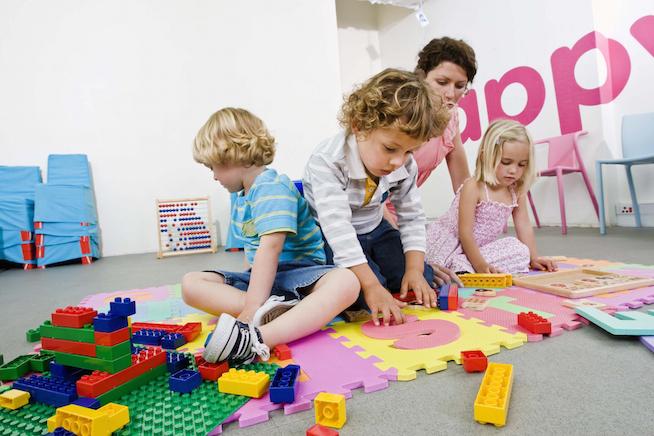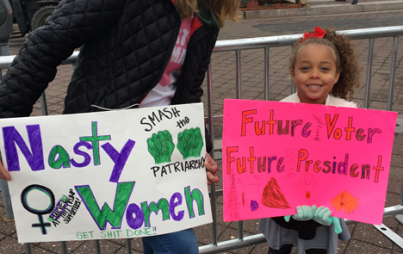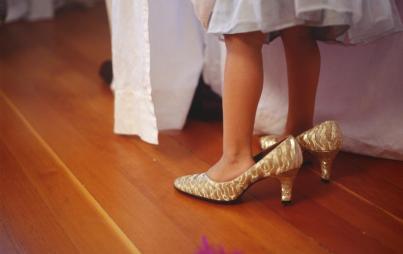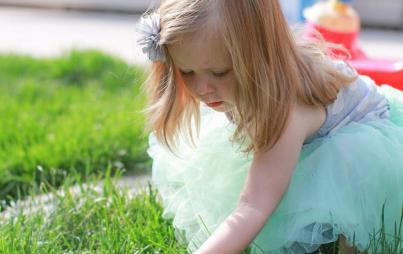
We sincerely hope there's a time when we won't have to have this conversation anymore.
Most infuriating is that the gendered world of children stands in direct opposition to the changed and changing gender norms of the adult world.
I recently participated in a panel on the war on women put together by New York State Senator Liz Krueger, who wanted to understand how it has become an acceptable strategy to attack women for political gain.
When thinking about how we’ve reached a place where anti-woman sentiment is on the rise in our politics, public life and culture, I suggest we begin with our children. I think and write a lot about children and gender because I have two young daughters facing unprecedented levels of pinkification, because I was raised by a feminist leader who had to figure out how to incorporate a son into her feminist world, and because I think challenging the gender divisions children learn is crucial to our future.
I also think about these things because as a modern parent they are inescapable — they pervade everything. Most infuriating is that the gendered world of children stands in direct opposition to the changed and changing gender norms of the adult world. So, while my girls see women doctors and police officers and judges and politicians, and both parents working outside the home and stepping up inside the home, and variations in gender identity and sexual orientation, it clashes with the rules of their world, which are quite strict.
I refer to the normalcy placed on rigid gender roles in children’s clothes, toys, television programming, and books as “The Subtle Backlash.” I call it this because the way corporations and advertisers have made everything gendered is both subtle and presented as natural. The message children in 2015 get about gender is this is just the way things are. Boys are blue. Girls are pink. Boys like trucks and balls. Girls like dolls and strollers. Boys are physical. Girls are verbal. Boys are messy. Girls must look beautiful.
As Elizabeth Sweet, who researches gender and children’s toys at UC Davis, has noted, “Practically everything is gendered...School supplies. Toothbrushes. Snacks with...princesses on them, and snacks with Superman. And boy is the gender-neutral default. For girls, they ‘shrink it and pink it.’” And, if you have bought anything for a child in the past two decades or so this will all sound familiar.
In fact, after two and a half decades of seeing rigidly gendered toys, it may be hard to remember that it was not always this way. For example, in the 1970s and 1980s LEGOs were made in primary colors and sold to all children. Now, LEGOs marketed to girls are pink and purple and focused on homes, and LEGOs marketed to boys absolutely avoid pink and purple and revolve around superheroes and action.
As another example: Think about what children’s books and other media teach. Twice as many children’s books feature male protagonists as they feature female protagonists. Just under 30% of films for children have female protagonists, less than 25% of films have a female lead or co-lead, and the vast majority of speaking roles in films are male. While there are exceptions, many children’s books teach the male default just as children are first exposed to language. So, animals of all sorts — even dinosaurs — are almost always referred to as “he.” And let’s not forget what gender children are often told God is. This default pervades children's books, television shows, and movies. So children learn that males are important and "normal," and that females are lesser and abnormal. Or, as feminist writer Soraya Chemaly has argued, “Each time a child plays male-dominated games, learns a womanless history, or watches gender-imbalanced movies, he or she learns that girls and women are worth less.”
As children who are raised with these gendered divisions age, they also learn to segregate themselves and limit their interests and experiences. Boys gradually learn not to read books written by women or books with female protagonists.
The bottom line though is that children learn from what they are shown both by their parents and by the society they live in. This is why it is essential that women are better represented in government and on corporate boards, and in books and Hollywood, too. The author Kevin Powell, who has worked on college campuses to re-educate men about masculinity, put it this way: “When you don't know something about a group or people, any people, people different from you, it becomes very easy not to honor them as your equals, easy not to respect them, easy not to love them, easy not to see their lives as valuable as yours. And easy to directly and indirectly participate in hurting that group, with your language, with your deeds, with your ignorance and reckless disregard for their humanity.”
All of this ignores that, however we define ourselves in terms of gender, we are in fact individuals with unique traits, interests, and affinities, and that our gender identity exists on a spectrum. Nevertheless, given the current backdrop, it is not a surprise that people, including those in government and those vying for the presidency — both men and women — devalue things that are labeled women’s issues, and do not view women's lives and interests as equal or significant.







